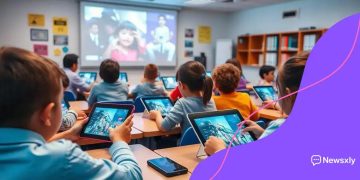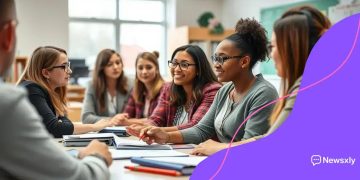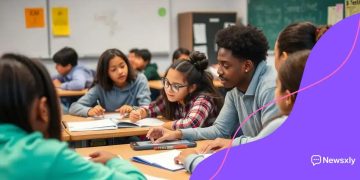Education recovery post-covid: strategies for success
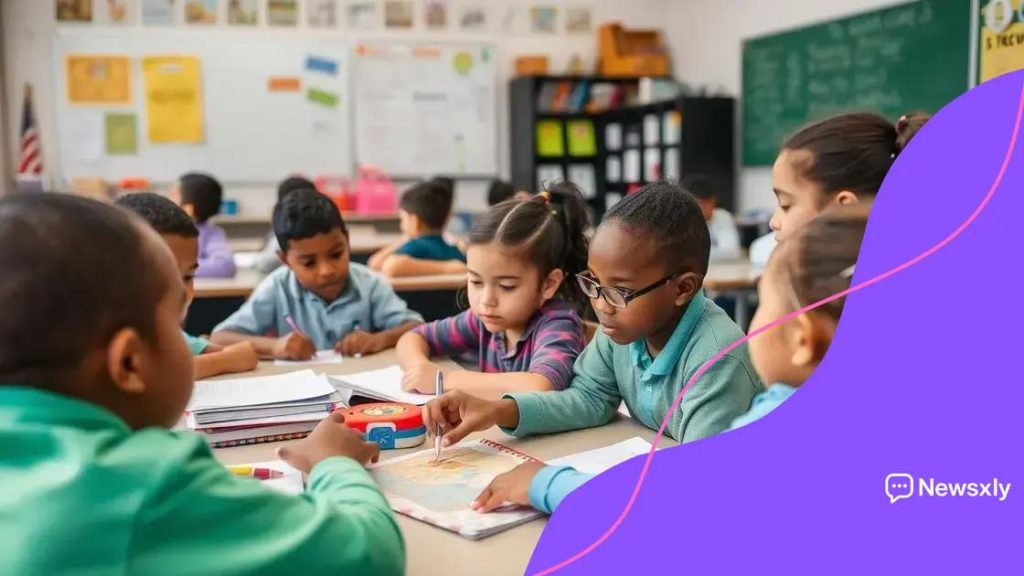
Education recovery post-covid requires community involvement, technology integration, and innovative strategies to create supportive learning environments and address diverse student needs effectively.
Education recovery post-covid is critical as we navigate these challenging times. How can we reshape our learning environments to support students effectively? Let’s explore strategies to enhance education for all.
Understanding the impact of covid on education
The COVID-19 pandemic has dramatically shaped our educational landscape. Understanding the impact of covid on education is crucial for planning future recovery strategies. Many students faced significant disruptions in their learning environments.
Learning Disruptions
The sudden shift to online learning was challenging for both educators and students. Many faced difficulties accessing technology and reliable internet. This led to a loss of critical learning time, affecting educational progress.
- Students struggled with motivation during remote learning.
- Teachers had to quickly adapt their lessons to an online format.
- Some students lack adequate support at home.
- Concerns about mental health increased among students.
Additionally, the closing of schools impacted social interactions, which are vital for student development. Students missed out on friendships and participation in extracurricular activities, which contribute to a well-rounded education.
Equity in Education
Another major concern is equity in education. Not all students had the same resources. Disparities in access to technology widened the achievement gap. Low-income families often faced greater challenges, making it essential to address these inequalities.
Schools are now tasked with developing strategies that focus on inclusivity and support for all students. This will help ensure that the recovery process is equitable and effective.
As we understand the impact of covid on education, it becomes clear that we must implement changes. These changes should not only address the educational gaps created during the pandemic but also build resilience for the future.
Key challenges in education recovery
Addressing the key challenges in education recovery is crucial for restoring effective learning environments. The process is complex and requires thoughtful strategies to support students and educators alike.
Resource Allocation
One major challenge is the need for adequate resources. Many schools face budget constraints that limit their ability to provide necessary materials and support. Teachers are often stretched thin, impacting their capacity to meet diverse student needs.
- Investing in technology to facilitate hybrid learning.
- Providing training for teachers on new teaching methods.
- Ensuring student access to mental health resources.
- Increasing funding for under-resourced schools.
Another challenge is the varying levels of student engagement. With different experiences during the pandemic, some students struggle to reconnect with their studies. Boosting engagement is essential for effective learning.
Addressing Learning Loss
Learning loss has been significant for many students due to disruptions in traditional education. Schools must identify gaps in knowledge and create tailored plans to help students catch up. This may include tutoring programs, after-school support, and personalized learning paths that address individual challenges.
Alongside learning loss, many students face emotional challenges resulting from isolation during the pandemic. Strategies to integrate social-emotional learning are becoming a priority in recovery efforts. Understanding these emotional barriers helps educators create a supportive environment.
As we explore the key challenges in education recovery, we see that collaboration among educators, parents, and communities is vital. Without a well-coordinated effort towards recovery, the goal of educational equity and quality learning for all students may remain out of reach.
Innovative strategies for effective learning
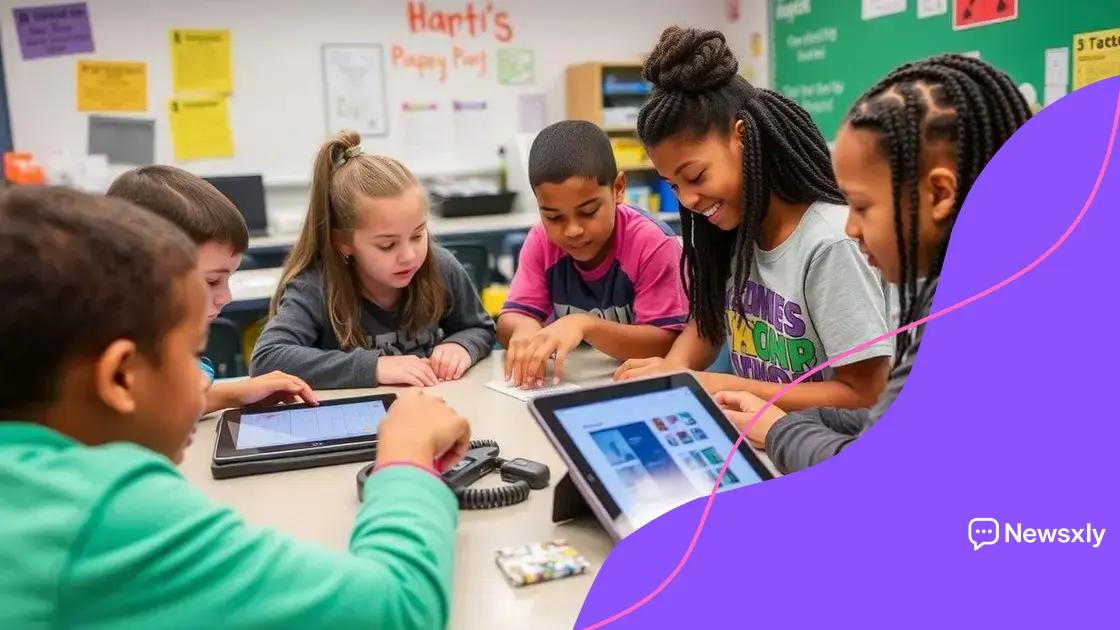
To foster recovery in education, schools must implement innovative strategies for effective learning. These strategies not only enhance student engagement but also adapt to the needs of diverse learners.
Personalized Learning
One key approach is personalized learning. This method tailors education to individual student strengths and interests. Teachers can design lessons that cater to varied learning styles, ensuring that each student feels supported in their educational journey.
- Utilizing technology to create customized learning paths.
- Incorporating student interests in curriculum design.
- Offering flexible pacing for lessons.
- Using data to monitor student progress actively.
Another effective strategy is project-based learning. This hands-on approach encourages students to engage deeply with real-world problems. In project-based learning, students typically work in groups, promoting collaboration and critical thinking.
Integrating Technology
Integrating technology into the classroom is also essential. Technologies such as virtual reality (VR) and interactive learning tools can enhance the educational experience. By making lessons visually immersive, students are more likely to retain information. Furthermore, technology facilitates remote learning options, allowing flexibility for students and teachers.
In addition, social-emotional learning (SEL) is gaining attention. Incorporating SEL into the curriculum helps students develop important life skills like empathy and resilience. This focus on emotional well-being is crucial for creating a supportive learning environment.
As we explore innovative strategies for effective learning, it’s clear that a blend of technology, personalized approaches, and social-emotional development is vital. Implementing these strategies can create a richer and more inclusive educational experience for all students, laying a strong foundation for their futures.
Role of technology in education recovery
The role of technology in education recovery is becoming increasingly vital as we transition back to normalcy. Integrating technology can help to enhance learning experiences, making education more accessible and engaging for students.
Online Learning Platforms
One of the key advancements is the use of online learning platforms. These platforms provide students with the flexibility to learn at their own pace. This also allows teachers to offer tailored support based on individual learning needs.
- Students can access a variety of resources easily.
- Teachers can track student progress through analytics.
- Engagement can be increased with interactive lessons.
- Accessibility is improved for students with disabilities.
Moreover, blended learning is gaining traction. This combines in-person instruction with online learning, offering a hybrid approach to education that can cater to diverse learning styles.
Assistive Technologies
Assistive technologies play a significant role in supporting students with special needs. Tools such as text-to-speech software and interactive whiteboards help create an inclusive environment where all students can thrive.
Additionally, technology fosters collaboration among peers. Through tools like discussion forums and group projects, students can communicate and work together, enhancing their learning experiences.
As we explore the role of technology in education recovery, it is evident that these tools are essential for rebuilding and enhancing the educational landscape. By embracing technology, schools can create resilient environments that meet the needs of all learners, paving the way for future success.
Community involvement in recovery efforts
Community involvement in recovery efforts is essential for strengthening the education system post-covid. When schools and communities work together, they create a supportive environment that enhances student learning.
Collaboration with Local Organizations
One effective way to boost recovery is through collaboration with local organizations. These partnerships can provide additional resources and support to schools. Local businesses, non-profits, and community centers can offer valuable services.
- Providing tutoring and mentoring programs for students.
- Organizing after-school activities to keep students engaged.
- Offering mental health support services.
- Facilitating access to technology and learning materials.
Another important aspect of community involvement is engaging parents and families. When parents are active participants in their children’s education, it fosters a sense of belonging and investment in the school community.
Events and Workshops
Organizing community events and workshops can also play a significant role in recovery. These activities can raise awareness about educational challenges and opportunities available to students. Workshops can educate families about the resources and support systems in place.
Additionally, these gatherings encourage open communication between educators and community members. By sharing insights and feedback, they can collaboratively develop solutions that address specific needs.
As the focus on community involvement in recovery efforts grows, it becomes clear that collective action paves the way for lasting change. By uniting schools, families, and community partners, they can work towards a brighter future for all students.
\n
FAQ – Questions About Education Recovery Post-Covid
Why is community involvement important in education recovery?
Community involvement helps create a supportive environment for students, enhancing their learning experiences and providing essential resources.
How can technology improve education recovery efforts?
Technology can enhance learning by providing online platforms, facilitating personalized learning, and increasing engagement through interactive tools.
What are some innovative strategies for effective learning?
Innovative strategies include personalized learning paths, project-based learning, and integrating technology into lessons to address diverse student needs.
How does emotional support benefit students during recovery?
Emotional support is crucial for addressing mental health challenges, helping students feel safe and connected, which promotes better learning outcomes.
